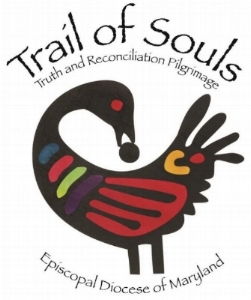We did not know that there were many more services that would follow, even with the rise of Asbury Broadneck AME (today, Asbury Broadneck United Methodist Church) by 1852 and the end of chattel slavery in 1864.
In the 2014 TRAIL OF SOULS report we reported
No records of enslaved persons appear in the histories of St. Margaret’s Church until the 1800s.
It is nearly impossible to report what may have occurred before 1827. This parish lost most records in the 1803 fire that destroyed the second church and left St. Margaret’s without a church building until 1827 ca.
The parochial report for 1825 apparently includes five colored baptisms (the first such reporting) and the accuracy of this report is highly questionable. The parish reported no other baptisms, marriages, and confirmations in 1825 — a year when the parish had no rector and no church building.
In 1832, responding to the 1831 Nat Turner Rebellion, Maryland barred persons of African descent from holding religious meetings unless a white minister was present.
In 1844, according to the Rev. Orlando Hutton, rector, St. Margaret’s Church clergy performed 16 colored baptisms, and five colored marriages. There is no information about where these services were held.
Extending sacraments and pastoral care to persons of African descent would continue in 1846 when the Rev. Samuel Ridout, M.D. became rector, serving as rector until the close of 1860. According to annual parochial reports submitted by Dr. Ridout to the (Episcopal) Diocese of Maryland, he conducted these services at unknown locations (likely private services and not inside the church building)
- 1846 three baptisms
- 1847 seven baptisms, one marriage
- 1848 12 baptisms
- 1849 nine baptisms, one burial
- 1850 seven baptisms
- 1852 nine baptisms, two burials
- 1853 20 baptisms, four burials
- 1854 19 baptisms, two marriages
- 1855 13 baptisms, six marriages
- 1856 nine baptisms three marriages
- 1857 16 baptisms, two marriages
In 1864, St. Margaret’s Church clergy apparently conducted colored services that included 10 baptisms, four marriages, two burials. Little information is available about who conducted these services and where they were held. No dates are available, consequently we cannot know whether they occurred before of after November 1, 1864. Perhaps ongoing research regarding St. Margaret’s Church clergy at the time will provide additional information.
After 1864 only three baptisms and four marriages of persons of African descent appear until Dr. Ridout returns to St. Margaret’s Church as rector in 1870.
St. Margaret’s register shows Dr. Ridout conducted services for persons of African descent who were not members of St. Margaret’s from 1870 until just before his death in 1885, including two baptisms at the then Asbury Broadneck African Methodist Episcopal Church and two weddings at his Whitehall home.
The 2014 TRAIL OF SOULS report concludes After the 1885 death of Dr. Ridout, there is no longer any evidence that persons of African descent received the sacraments and pastoral care from St. Margaret’s Church clergy. Asbury Broadneck AME Church (once Little Asbury and today’s Asbury Broadneck United Methodist Church) became the religious center for persons of African descent on the Broadneck Peninsula

